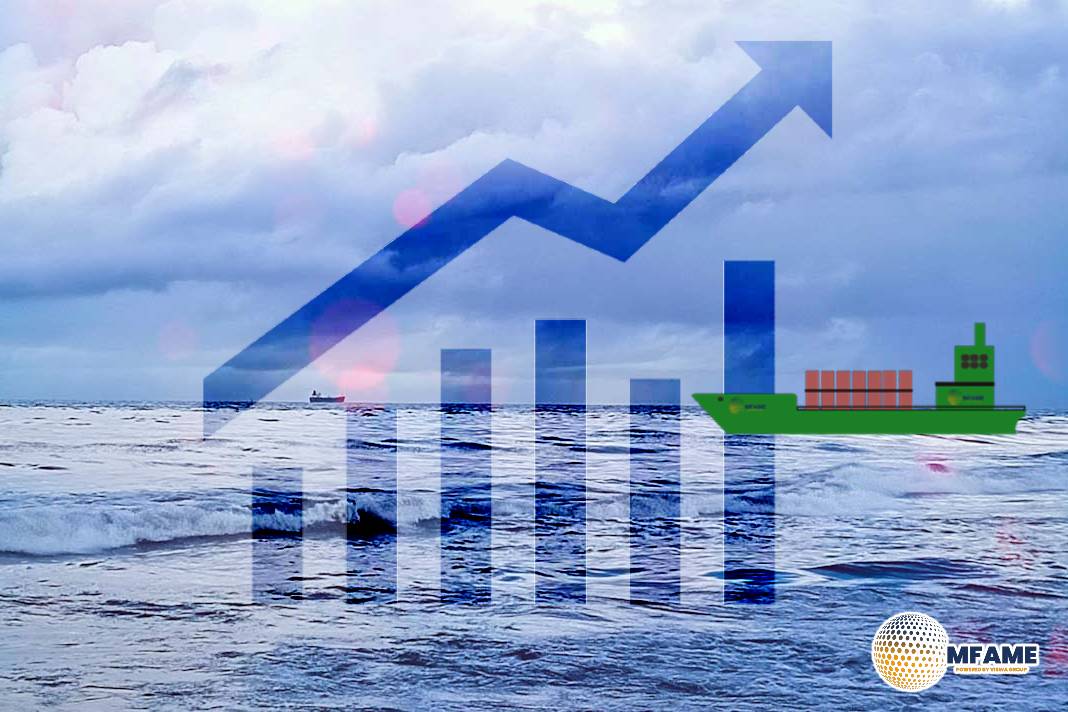 Typically, late July’s dry bulk shipping reports are vibrant, filled with speculations on the Baltic indices’ peaks. However, this year has been an anomaly, with such discussions vanishing into obscurity. On Thursday, the Baltic Dry Index (BDI), a key activity indicator in the dry bulk sector, plunged back into the three-digit range, ending the twenty-ninth week at 950 points. The volatile Capesizes succumbed to recent downward pressures, stabilizing at $11,958 daily. Similarly, the grain-trading workhorses recorded losses, with BPI82 TC levels closing at $8,320 daily. Supramaxes stood out positively, being the only segment in the green at $8,333 daily. Conversely, Handies dropped another $167, closing at $7,202 daily on Friday. This summary encapsulated Doric’s Weekly Insight twelve months ago, reports breakwave advisors.
Typically, late July’s dry bulk shipping reports are vibrant, filled with speculations on the Baltic indices’ peaks. However, this year has been an anomaly, with such discussions vanishing into obscurity. On Thursday, the Baltic Dry Index (BDI), a key activity indicator in the dry bulk sector, plunged back into the three-digit range, ending the twenty-ninth week at 950 points. The volatile Capesizes succumbed to recent downward pressures, stabilizing at $11,958 daily. Similarly, the grain-trading workhorses recorded losses, with BPI82 TC levels closing at $8,320 daily. Supramaxes stood out positively, being the only segment in the green at $8,333 daily. Conversely, Handies dropped another $167, closing at $7,202 daily on Friday. This summary encapsulated Doric’s Weekly Insight twelve months ago, reports breakwave advisors.
A year later, market has shifted significantly. The Baltic indices showed relative stability during the twenty-ninth trading week, with the exception of Capesizes. The Capesize index notably reported a 9.8 percent weekly loss, closing this Friday at $24,652 daily. Panamax and Supramax indices hovered close to each other, finishing at $15,427 and $15,117 daily, respectively. Handies saw a 1.5% weekon-week increase, concluding at $13,543 daily.
IMF
On the macroeconomic front, the International Monetary Fund (IMF) updated its economic outlook on Tuesday. It raised growth projections for China, India, and Europe, while slightly lowering them for the United States and Japan. The IMF emphasized that global progress against rising prices has been hindered by stubbornly high inflation in the services sector, affecting everything from airline travel to dining out.
Global growth is forecasted to align with the April 2024 World Economic Outlook (WEO), at 3.2 percent in 2024 and 3.3 percent in 2025. Global economic activity and world trade strengthened at the year’s turn, driven by robust exports from Asia.
Growth forecast
Growth forecasts for emerging markets and developing economies were revised upward, driven by stronger activity in Asia, especially China and India. China’s growth is projected to rise to 5 percent in 2024 due to a rebound in private consumption and strong firstquarter exports. However, GDP growth is expected to notably slow to 4.5 percent in 2025. India’s growth forecast was revised up to 7.0 percent for this year, reflecting improved prospects for private consumption, particularly in rural areas.
Global trade is set to recover, with world trade growth expected to rebound to about 3.25 percent annually in 2024-25, aligning with global GDP growth. Although cross-border trade restrictions have increased, impacting trade between geopolitically distant blocs, the global trade-to-GDP ratio is expected to remain stable in the projection.
Additionally, the potential for renewed geopolitical tensions, particularly in light of the upcoming US presidential election, introduces a significant element of risk. The accumulation of commodity stockpiles, including soybeans, iron ore, and coal, further complicates the market outlook. While they are set against the backdrop of a typically strong second half of the trading year, these factors contribute to a cautiously optimistic view.
Did you Subscribe to our daily newsletter?
It’s Free! Click here to Subscribe
Source: Breakwave
























